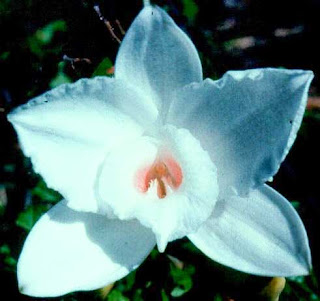African spotted orchid Oeceoclades maculata
Family: Orchidaceae
Subfamily: Epidendroideae
Tribe: Cymbidieae
Subtribe: Eulophiinae
Synonyms Oeceoclades
mackenii
Distribution
Distribution in South Africa: KwaZulu-Natal
Widespread across the tropics of Africa and South and
Central America, and rare in southern Africa.
A globally very widespread species, however in South Africa
it is very rare, known from only a few records, but not suspected to be
threatened. It may also be overlooked as plants are well camouflaged among
shaded forest leaf litter.
The African spotted orchid Oeceoclades maculata, also known as the monk orchid, is a terrestrial orchid species that is native to tropical Africa, the sub-tropical east coastal region of South Africa and Madagascar. Oeceoclades maculata is considered to be one of the most successful invasive orchids which has naturalized in South and Central America, the Caribbean, and Florida in North America. It was first described by the English botanist John Lindley as Angraecum maculatum in 1821 based on a specimen collected from South America. Lindley later revised his original placement and moved the species to the genus Oeceoclades in 1833.
Habitat:
Oeceoclades maculata grows in leaf
litter amongst rocks in the shade of riverine forest and woodland. It produces
a very short rhizomatous stem that is covered with secondary stems that are
expanded to form below ground, rounded pseudobulbs up to 6 cm in length. From the top of the pseudobulb flattened a
single linear leaf emerge that is up to 40 cm in length.
Temperatures:
In their natural habitat they experience summer day
temperatures of 27 -32 degrees C, and night time temperatures which average around
21 degrees C, with a winter minimum night time temperatures as low as 10 degrees C and daytime temperatures around 25 degrees C.
Humidity:
75-80% in summer dropping as low as 50% in winter.
Culture.
Oeceoclades maculata which are easy to grow require shady
conditions and filtered or diffused light. Good air movement should be provided
at all times.
Growing media:
A mix of equal parts well decomposed leaf-mould, small
crushed stone, decayed granite or river pebbles and medium sized composted pine
bark compost works well. Oeceoclades maculata should be grown in shallow
well-drained containers large enough for about 2 – 3 years growth. Repotting is
best done in early spring as new growth resumes and should be avoided before
the winter rest.
Water:
Oeceoclades maculata should be watered heavily while
actively growing, but drainage must be excellent, and conditions around the
roots should never be stale or soggy. Watering needs to be reduced for 2-3
months in winter
Fertilizer:
I use a balanced water-soluble hydroponics fertiliser to
which I add equal amounts of fulvic acid and humic acid at a quarter to half a
gram each per litre of water, applied weekly as a drench keeping the leaves dry
when the plants are actively growing.
They should be allowed to become almost dry between
waterings, but they should not dry out completely. Fertilizer should be reduced
when water is reduced.







No comments:
Post a Comment